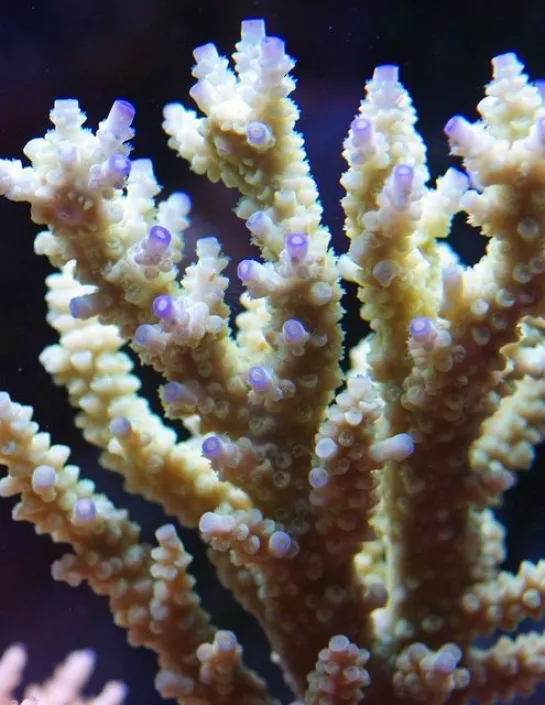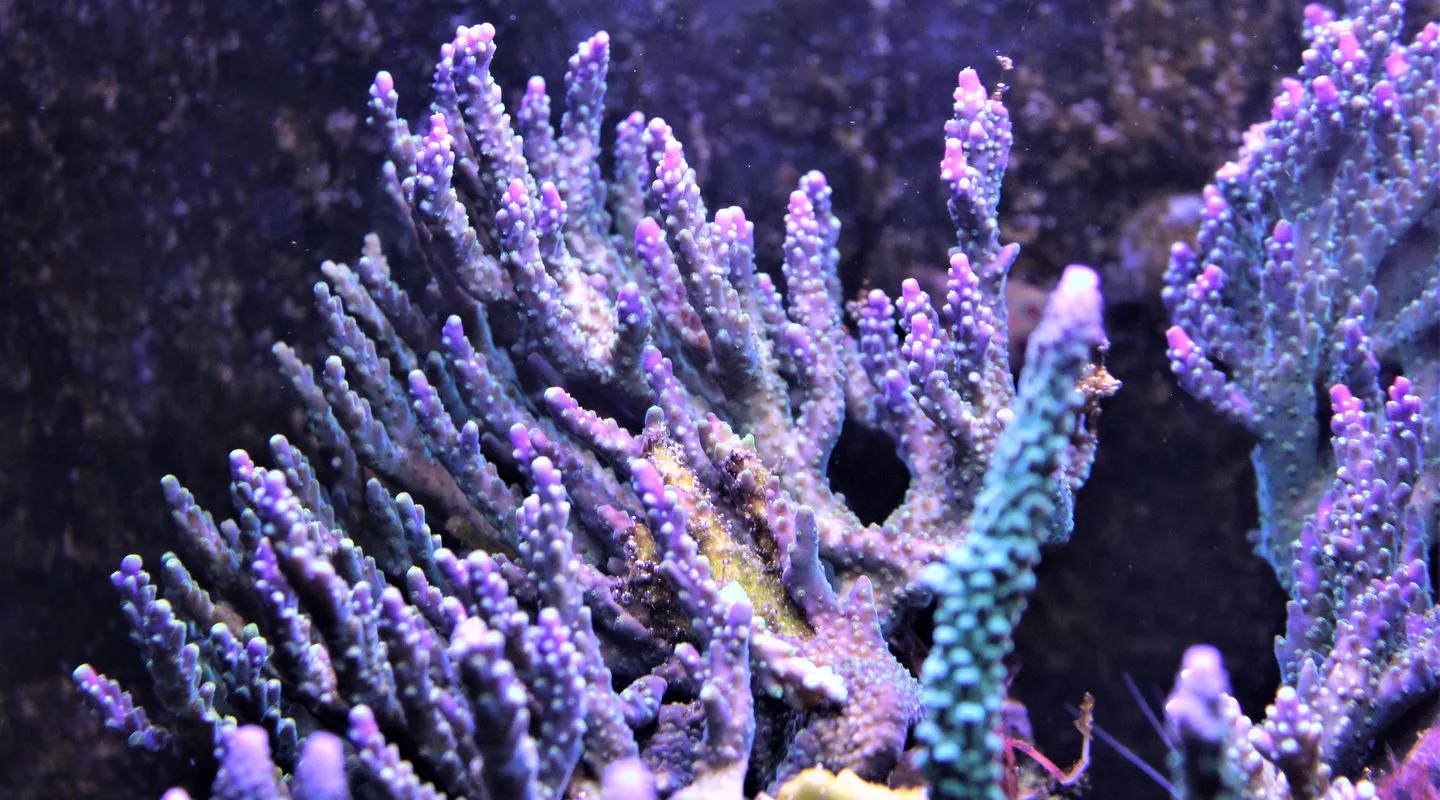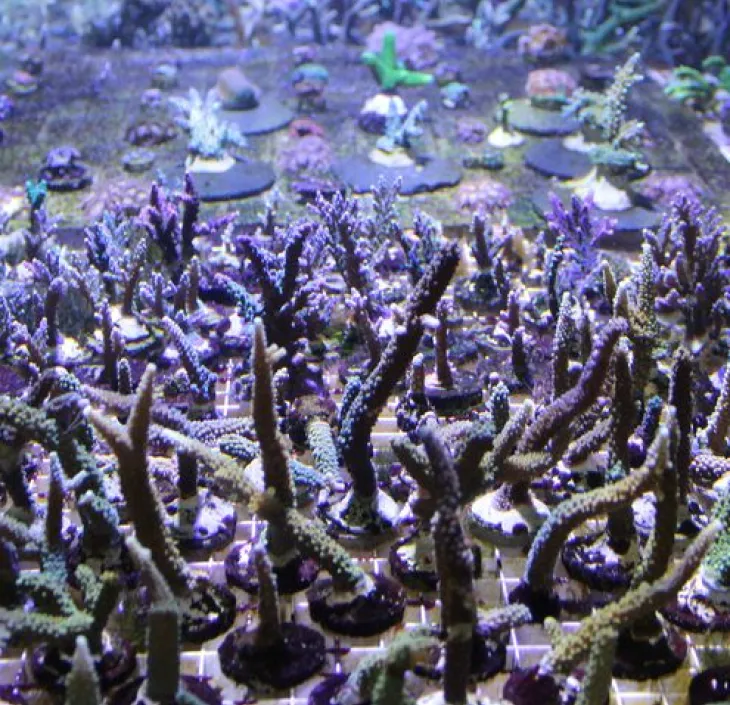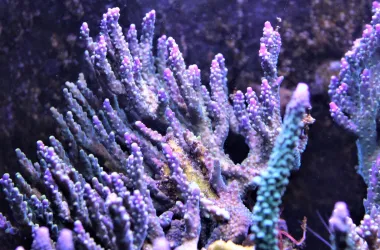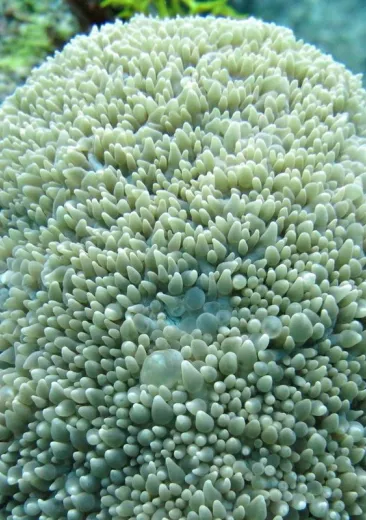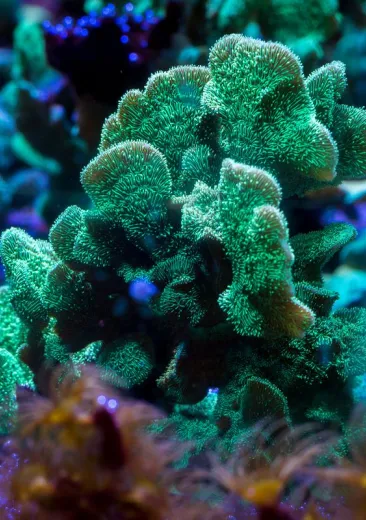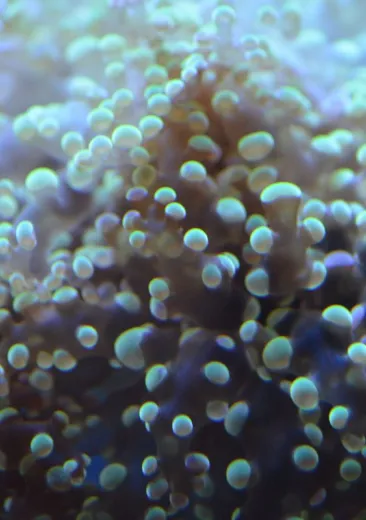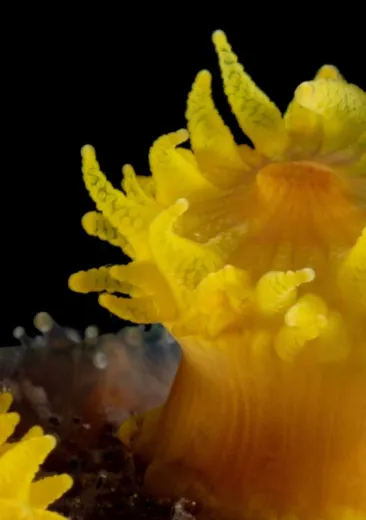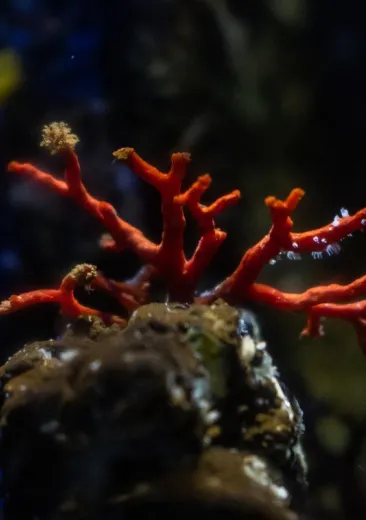Where is the animal to be found?
PTo grow, these corals need clear, unpolluted water, plenty of light, which means a shallow depth (less than 50 m), constant salinity and a temperature above 20°C.
How can it be recognised?
Acropora corals are branched and have a tree-like appearance. The colour of the corals differs depends on where they live. Their colony expands horizontally so that a maximum surface area is exposed to light.
What is distinctive about it?
Corals of the genus Acropora are among the most widely represented hard corals. The genus Acropora has over a hundred species, which are not always easy to identify.
Acropora corals contribute to creating a large and diverse reef ecosystem. The more diverse a reef is, the more resilient it will be. In addition to their ecological importance, coral reefs are of major economic, social and cultural importance to the countries they border.
They play an important role in regulating the greenhouse effect and global warming.
Threat and protective measure
Several species of corals of the genus Acropora are listed on the IUCN Red List. Their statuses are more or less critical, but overall, the populations of these species are decreasing. Acropora corals are sensitive to pollution and rising water temperatures. Furthermore, some invasive species can ravage the reef extremely quickly. Coral bleaching results from a discoloration of the symbiotic algae, which eventually results in the death of the corals. This bleaching is linked to pollution and rising water temperatures. There have been several recent massive bleaching events affecting coral reefs. The observations made are sometimes very alarming in terms of maintaining the ecosystem.
